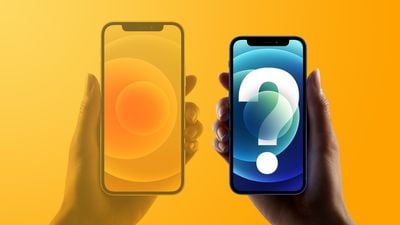The iPhone 14 lineup is the first iPhone series to not include a display size below six inches, despite sticking with the 6.1-inch and 6.7-inch form factors of previous generations that included a 5.4-inch model. So why did Apple eliminate the "mini" device that some iPhone customers had come to love?

Apple debuted the iPhone 12 mini in 2020 following years of calls from iPhone fans for the company to offer a small-screen device with the latest features. When Apple did so, it was assumed that the small form factor would persist for several years – but it appears that the device has come to a premature end upon the release of the iPhone 14 lineup.
Concerns first arose when the iPhone 12 mini appeared to not be selling as well as Apple had hoped, making up just six percent of iPhone 12 sales in the U.S. in October and November 2020, according to data gathered by Consumer Intelligence Research Partners (CIRP). Counterpoint Research reported that the iPhone 12 mini accounted for only five percent of all iPhone 12 sales in the U.S. in the first half of January 2021.
Morgan Stanley believed that Apple chose to cut production of the iPhone 12 mini by two million units to create more manufacturing capacity for the more popular iPhone 12 Pro. This was mirrored by a Taiwanese report, citing supply chain sources, which said that strong demand for iPhone 12 Pro models in China led Apple to increase its supply of the more expensive devices.
Most strikingly, JP Morgan Chase claimed that Apple outright halted iPhone 12 mini production in the second quarter of 2021. While the sales reports for the iPhone 12 mini did not bode well for the iPhone 13 mini, Apple plans its iPhone production and supply chain operations well in advance of launch, meaning that the iPhone 13 mini was already well on the way to production by the time the issues with the iPhone 12 mini's sales were clear.
In April 2022, CIRP released more data suggesting that the iPhone 13 mini accounted for just 3 percent of iPhone 13 sales – half that of the iPhone 12 mini. These continued poor sales were likely the main reason behind the demise of the "mini" form factor iPhone.
With the iPhone 14 lineup, Apple has opted to replace the "mini" device with an all-new "Plus" device. In some respects, the iPhone 14 Plus mirrors the iPhone 12 mini, offering the latest iPhone's features in a different display size. Instead of offering a lightweight small-screen option, customers can now choose an even bigger battery and 6.7-inch display – the same size that iPhone "Max" customers have been used to for over four years now at a price of $1,099 – but at a lower, $899 price point.























